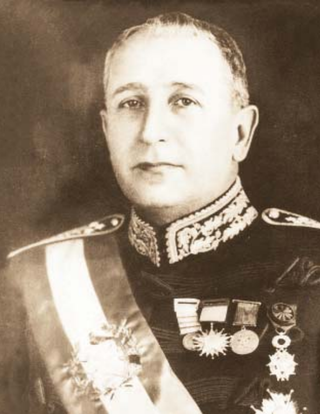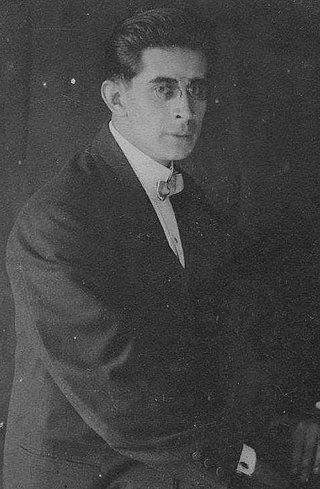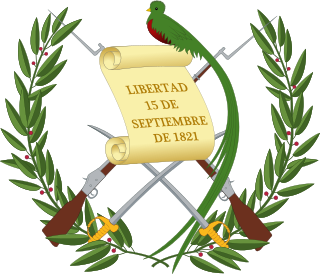
Jorge Ubico Castañeda, nicknamed Number Five or also Central America's Napoleon, was a Guatemalan dictator. A general in the Guatemalan army, he was elected to the presidency in 1931, in an election where he was the only candidate. He continued his predecessors' policies of giving massive concessions to the United Fruit Company and wealthy landowners, as well as supporting their harsh labor practices. Ubico has been described as "one of the most oppressive tyrants Guatemala has ever known" who compared himself to Adolf Hitler. He was removed by a pro-democracy uprising in 1944, which led to the ten-year Guatemalan Revolution.

Jean Meyer is a Mexican historian and author of French origin. He has published extensively on the Cristero War and on the caudillo Manuel Lozada.

Imanol Ordorika Sacristán is a Mexican social activist, political leader, academic and intellectual. He was one of the initiators and principal leaders of the Consejo Estudiantil Universitario at the National Autonomous University of Mexico (Universidad Nacional Autónoma de México, UNAM), with Carlos Imaz Gispert and Antonio Santos Romero, from 1986 to 1990. A founder and prominent member of the Partido de la Revolución Democrática (PRD) until 2001. Professor of social sciences and education at the Universidad Nacional Autonoma de Mexico. Ordorika is an active participant in the Mexican political debate as well as an Op-ed writer for La Jornada and other Mexican media.

Rafael Yela Günther was a Guatemalan painter and sculptor.

Parliamentary elections were held in Guatemala for half the seats in Congress between 16 and 18 January 1953. The Revolutionary Action Party won a plurality of seats.

Parliamentary elections were held in Guatemala for half the seats in Congress on 16 December 1950. The Revolutionary Action Party won a plurality of seats.

Presidential elections were held in Guatemala between 10 and 12 November 1950. The result was a victory for Jacobo Arbenz Guzmán, who received 65.44% of the vote. Voter turnout was 71.6%.

Parliamentary elections were held in Guatemala between 26 and 28 November 1948 in order to elect half the seats in Congress. The National Renovation Party-Revolutionary Action Party alliance won the most seats, but the Popular Liberation Front remained the largest party.

Parliamentary elections were held in Guatemala between 24 and 26 January 1947 in order to elect half the seats in Congress. The Revolutionary Action Party won a plurality of seats.

Parliamentary elections were held in Guatemala on 3–5 November 1944 to elect members of the Congress. The result was a victory for the United Front of Political Parties and Civic Associations (FUPP), which won all 76 seats. The FUPP was an alliance of the National Democratic Front, the Popular Liberation Front, the Central Democratic Party, the Social Democratic Party, the National Renovation Party and the National Vanguard Party.

Presidential elections were held in Guatemala between 17 and 19 December 1944. The October Revolution had overthrown Jorge Ubico, the American-backed dictator, after which a junta composed of Francisco Javier Arana, Jacobo Árbenz and Jorge Toriello took power, and quickly announced presidential elections, as well as elections for a constitutional assembly. The subsequent elections were broadly considered free and fair, although only literate men were given the vote. Unlike in similar historical situations, none of the junta members stood for election. The front-runner was the philosophically conservative University professor Juan José Arévalo, of the National Renovation Party. His closest challenger was Adrián Recinos, whose campaign included a number of individuals identified with the Ubico regime. The ballots were tallied on 19 December and Arévalo won in a landslide with 86.25% of the vote, receiving more than four times as many votes as the other candidates combined. The Constitutional Assembly elections took place on 28–30 December, with the United Front of Arevalist Parties winning 50 of the 65 seats.

General elections were held in Guatemala on 5 December 1926. The presidential election resulted in a victory for Lázaro Chacón González, who received 88.6% of the vote. Whilst the elections were rigged, the Progressive Liberal Party did manage to win some seats in the Congress.
United Front of Political Parties and Civic Associations was a political electoral front in Guatemala. The principal partners in the front were the National Democratic Front (FND), Popular Liberation Front (FPL), Central Democratic Party (PDC), Social Democratic Party (PSD), National Renovation Party (PRN) and the National Vanguard Party (PVN). The Front was formed on October 19, 1944. It disbanded after the Legislative elections of 1944.

The National Democratic Reconciliation Party was a moderate conservative party in Guatemala.

Presidential elections were held in Guatemala on 27 August 1920. The result was a victory for Carlos Herrera, who received 95% of the vote.
The Mexican People's Party was a political party in Mexico, founded in 1977. PPM was led by Alejandro Gascón Mercado. PPM was mainly based in the Nayarit and Jalisco states.

Juan Pablo Wainwright Nuila was a Honduran revolutionary leader. A former member of the Canadian Army in World War I, he joined the Communist Party in El Salvador in 1928. He was expelled from the country that year, returning to Honduras. He was later identified as one of the major communist agitators in Latin America. After an escape from a Honduran prison in 1930, he was arrested in Guatemala in January 1932. Following a confrontation between Wainwright and Guatemalan dictator Jorge Ubico in a prison office, Ubico ordered Wainwright's execution.
Federico Hernández de León was a Guatemalan writer, historian and journalist. He graduated from the Instituto Nacional Central para Varones of Guatemala, with a high school diploma in 1900. Active politically, was arrested during the last few years of the government of president Manuel Estrada Cabrera, being held in the Central Penitentiary of Guatemala until the president was deposed on April 14, 1920. After his release, he went straight to take over the Diario de Centro América semi-official newspaper of Guatemala at the time. Later, he directed Nuestro Diario along with Carlos Bauer Aviles.

The Constitutional Elements were a set of guidelines in the form of a draft constitution for Mexico, written in April 1812, during the Mexican War of Independence by general Ignacio López Rayón, and circulated on September 4, 1812, in Zinacantepec, State of Mexico, with the purpose of constituting a nation independent from Spain. They are considered the direct antecedent and source of creation of the Sentimientos de la Nación of José María Morelos and, therefore, of the subsequent Constitution of 1824. Therefore, it is the oldest antecedent of Mexican constitutionalism.







